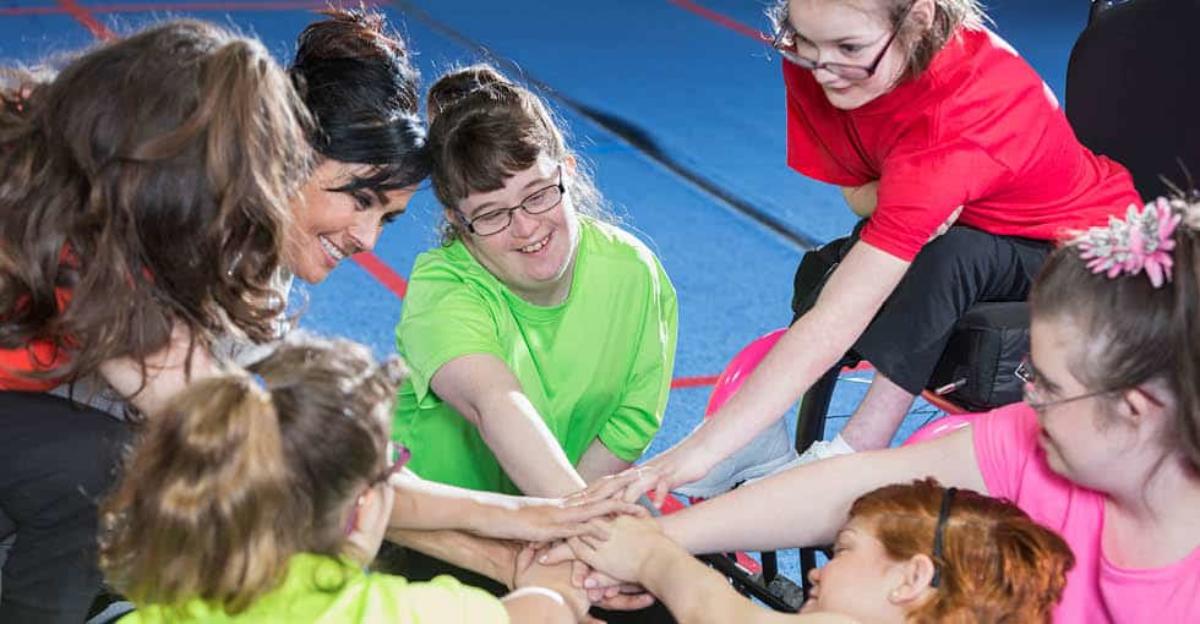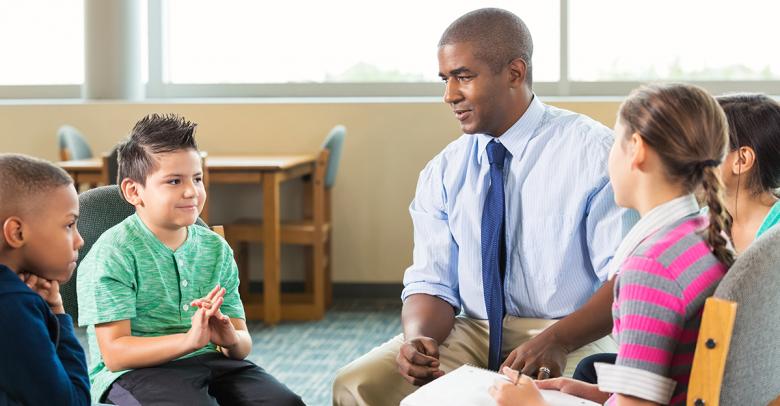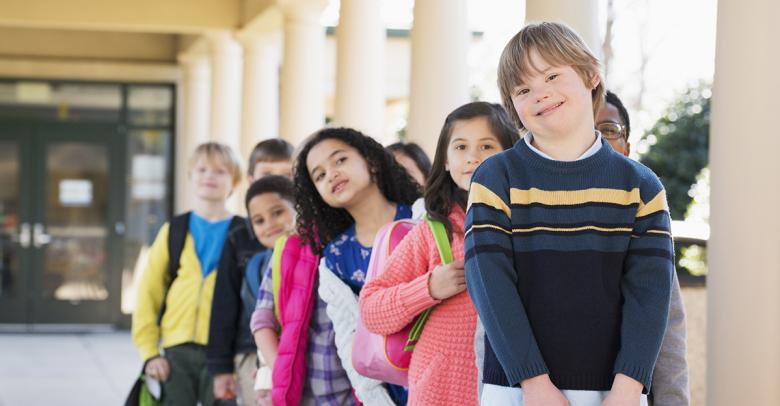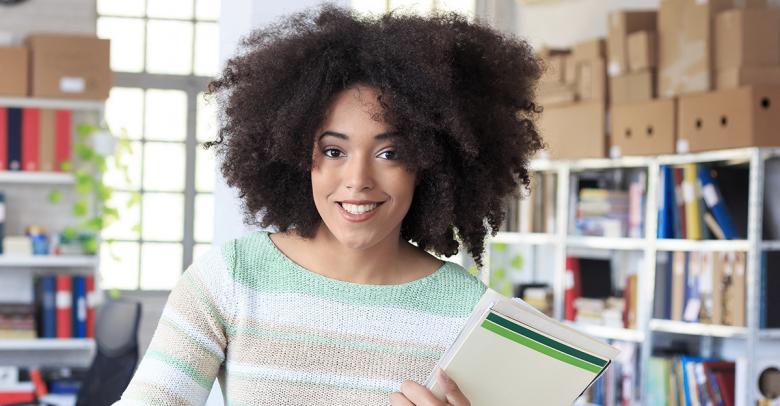If you are a physical educator, you no doubt have had students with disabilities in your class. In many instances, you may be not be aware of which students have a disability because the disability doesn’t affect their participation in your class. Other times you are well aware of those students and are looking for better ways to keep them challenged, and they end up having a successful and fun experience in your class. “Inclusive PE” is the term used for a General Education (Gen Ed) physical education class in which ALL students are included. This includes any student with a disability who may or may not also be receiving Adapted Physical Education (APE) by a special APE teacher. (APE is provided to students with disabilities as part of the special education services they receive.) Inclusive PE is part of the Gen Ed services and involves placing students alongside their peers with support and proper accommodations to help make everyone successful.
Inclusive PE incorporates everyone who can safely be included in a general PE class. Most students with disabilities (92% at elementary and 88% at secondary level) are mainstreamed into general PE classes. The greatest percentage of students with disabilities falls under the group “specific learning disabilities” (~45%) followed by “speech and language disorders” (~19%). The rest of the students with disabilities fall into the categories of “Autism Spectrum Disorder (ASD),” which can include emotional disturbance, hearing impairment (including deafness), intellectual disability, orthopedic impairments, other health impairments, traumatic brain injury, visual impairments (including blindness) and multiple disabilities.
Inclusive PE has benefits for all students. Students with disabilities gain valuable social skills when working and playing in the Gen Ed environment. All students learn appropriate behavior from a variety of their peers whether they are disabled or not. Students with disabilities have more opportunities to participate in age-appropriate physical activities in an inclusive PE environment compared to APE. Students develop relationships with their Gen Ed peers. Oftentimes, higher expectations lead children with disabilities to achieve more, gain confidence, and develop a stronger sense of self. On the other hand, the Gen Ed students also gain many advantages from inclusion. First, as they are exposed to children with disabilities, they tend to become more understanding of and develop more positive attitudes toward others with differences. They are less likely to see disability as an impairment and more likely to see it simply as a difference and accept them more readily. It has also been shown that when students are given the chance to be an “expert” in an area and become peer tutors, it helps them and increases their abilities in that area. In addition, when teachers create opportunities for students to learn in a variety of ways, it helps not just those with disabilities, but all students. There is no evidence at all that Gen Ed students lose academic or social skills as a result of inclusion. All evidence points to a win-win situation for all students.
As a PE teacher your goal is to help your students reach their full potential. An inclusive environment will help them get there. Be emphasizing respect, acceptance and cooperation as core values in class, you will create an environment that recognizes the value of differences and helps everyone focus on what they can do. The following strategies will help you build a more inclusive environment:
Talk to your class about inclusion
Have a conversation about expectations and etiquette. Students will have questions and concerns, so give everyone an opportunity for discussion. Help them to understand that all people have needs and rights and that everyone is different.
Use “People First” language
By putting the individual first and the disability second you are helping to create mutual respect. (E.g. “My student with autism” as opposed to “An autistic student.”)
Get to know your students
Find out about their abilities, strengths and challenges, rather than making assumptions based on their disability. Find out about their learning needs and which specific strategies work for them.
Consult with specialists
Specialists such as PTs, OTs, APE teachers, speech and language therapists, and others with more experience or education regarding working with students with disabilities can be a very effective resource.
Engage your students when adapting activities
Help them see that there are many ways to adapt to help them be successful. Guide them so that eventually they will know best how to adapt for themselves.
Adapting rules and instructions
If students are having difficulty following rules, simplify so there are fewer rules to remember. Make instructions clear and add resources where needed (e.g. white board, demonstrations, minimize background noise, etc.)
Modify activities
Sometimes students will need modifications and sometimes they won’t. It will depend on the student and the activity/skill/game being taught. Don’t assume that if a student has a disability they will always need things to be modified. The following are some general ideas for adapting activities:
- Let partners/peers assist
- Eliminate time limits
- Allow balls to be stationary
- Modify the purpose of the activity
- Use models to show the activity
- Reduce number of players per team
- Slow the pace of the activity
- Provide rest periods as needed
- Define boundaries clearly
- Modify the activity area
- Use a variety of sizes, weights, densities of toss/catchables
- Make lower/larger goals
- Use lighter equipment
- Provide balance support
If you are looking for ways to adapt your teaching to better suit students with varying disabilities, Sportime carries an Inclusive PE Equipment Pack that can help your students with disabilities reach their potential in PE.






[…] Resource: How to Make Your Physical Education Class More Inclusive […]